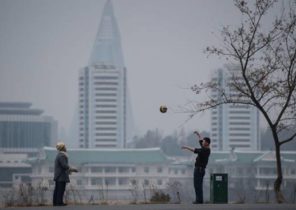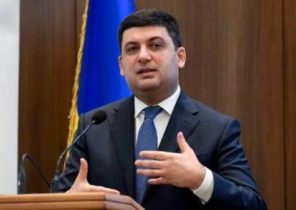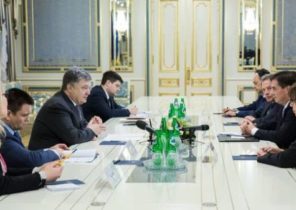
The Tabqa, Syria. — When Donald trump will meet on Friday in Hamburg with Vladimir Putin, they should remember that the emblem worn by the soldiers from the units of the Syrian democratic forces, which is the main US ally in this country. It depicts a map of Syria, split in two by the blue line of the Euphrates river.
The Euphrates is the unofficial line of “deconfliction” between the forces of the Syrian regime, located to the West of the river, and troops of the SDS, headed by the Kurds, who are located to the East of it. The first have the support of Russia and the second USA. In recent weeks the parties have agreed about the beneficial change that line, creating the arch with a length of 130 kilometers that stretches from the front of the city Tabka in the reservoir El-Assad in a southerly direction to the village of Karama on the Euphrates.
The Russian-American agreement about this buffer zone is a promising sign. In fact, it allows the United States and its allies to clear the capital of the “Islamic state” (banned in Russia organization — approx. TRANS.) Raqqa, while Russia and the Syrian regime will be able to take the city of Deir ez-Zor in the South-East. This line causes the sides to fight with ISIS but not with each other.
Trump and Putin need to discuss at the G20 summit the issue of whether the agreement on the split sample of a larger cooperation between the US and Russia in Syria. Efforts will be made to defeat ISIL, to stabilize the situation in the devastated and divided Syria, and eventually to discuss the political future of the country. But is it realistic?
Russian-American cooperation on Syria today is facing great obstacles. Such cooperation gives legitimacy to the actions of the Russian regime, which invaded the Ukraine, interfered in European and American elections, plus the carries on intervention in Syria. The very name of Putin causes acute irritation in Congress and in the American media, and trump stigmatize even the idea of compromise.
Against the background of these negative points there is only one positive argument that cooperation with Russia may be the only way to ease the violence in Syria and laying the foundations for a peaceful, more decentralized state, which gradually will be able to heal the wounds of this tragic war.
They say that the Secretary of state Rex Tillerson and the Minister of defense of Jim Mattis in favour of considering options of cooperation with Russia. “We see the potential for this, said on Tuesday, a senior state Department official. Yet Russia is seriously and works hard with us in this direction.”
But some militant hawks from the staff of the national security Council and members of Congress hold the opposite point of view. They argue that cooperation with Russia will give strength to her allies in the face of Iran and the Syrian regime of Bashar al-Assad, and allow them to participate in shaping the future of Syria.
Radicals from this camp argue that the United States should launch a military campaign to block Iran and its Shiite armed groups in Iraq and Syria, depriving them of the opportunity to make a corridor through Syrian South-East, which will connect Iran with Lebanon. But they ignore two practical issues: Iran such a corridor is already there, and it does not prevent the US and Israel to strike at the transport, who supply deadly weapons; and attack on Shiite fighting formation could drag America into a long and costly war that can engulf the entire middle East.
It is necessary to consider the process that led to the creation of a buffer zone along the Euphrates, because it shows how different can be the actions and public statements in Russia. According to the representative of the United States, the first time the Russian representatives offered to create a border along the Euphrates about 18 months ago. As the proposal was not implemented, both countries have acted on the situation.
This system of conflict prevention worked on three levels. The first and the second level — a daily telephone consultation between colonels, plus periodic contacts at higher level between the generals headquarters of the United States in Baghdad and the Russian headquarters near the Syrian Tartous. The most serious issues were dealt with by the commander of US forces, Lieutenant-General Stephen Townsend (Stephen Townsend) and his Russian counterpart Colonel-General Sergey Surovikin.
Last month, we have a crisis situation, when a few Syrian tanks advanced North of the unofficial line of separation, as considered by the American command. USA shot down a Syrian su-22, supporting this small tank unit. Russia announced that it was suspending contacts, and “a few hours, the situation remained quite dangerous,” says one us official. But then the Russian calmly resumed the dialogue, and by the end of June, the parties formally agreed to create arches with precise coordinates.
A similar interaction between Russia and the United States in recent weeks helps to reduce tension in the South-West of Syria. It supports Israel and Jordan, which border the area. It may also be a sample implementation of the scheme of de-escalation.
Cooperation with the Russians in Syria is unpleasant, if you remember their actions in the past. But if you abandon it, the degree of tension in this troubled country will remain very high, on the verge of ignition. And this will certainly be worse for all parties.





